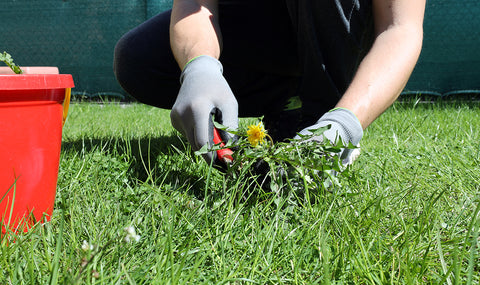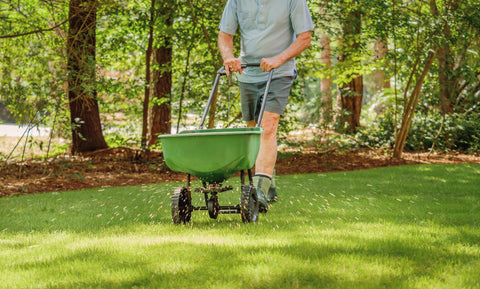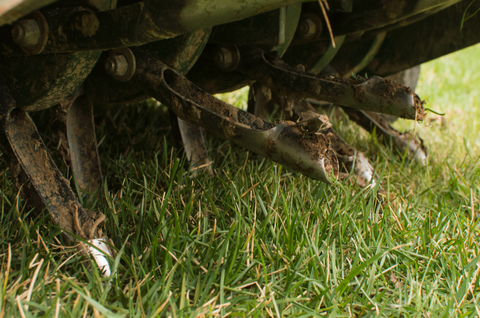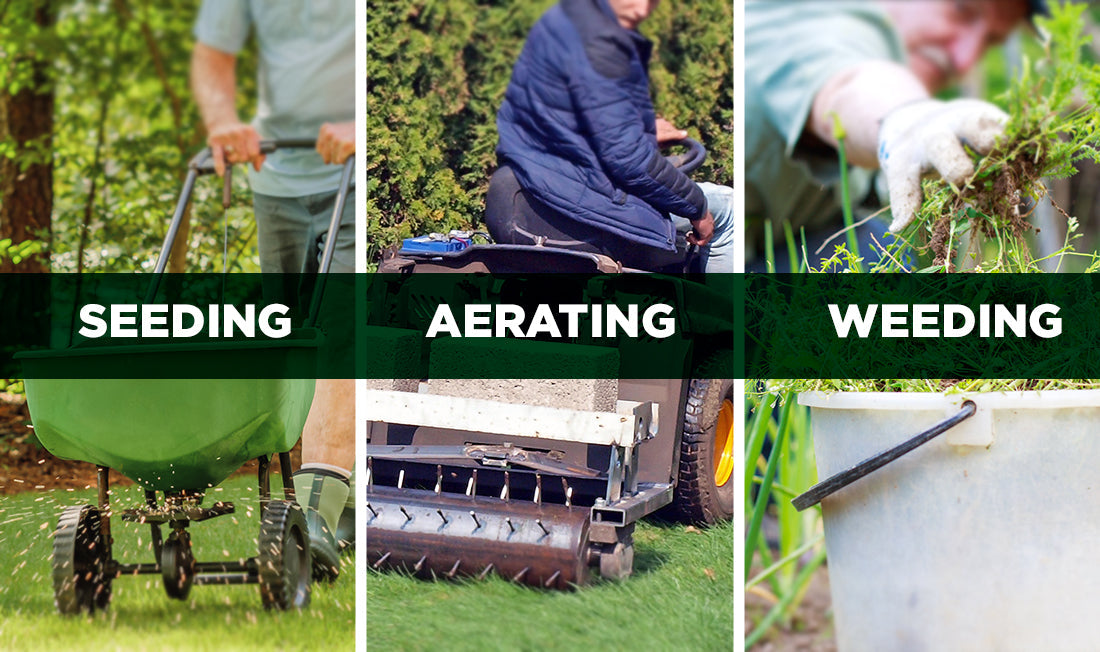Weed control, aerating, and seeding go hand in hand in spring and fall for most regions of the United States. Growing into spring requires the control of winter annual weeds by post-emergent treatment to start the growing season. Pre-emergent weed control is applied in the late winter or early spring to prevent weed seed germination. Core aeration (a cultural practice that removes a soil plug) is also performed in early spring on turfgrass and is usually performed in association with topdressing sand or topsoil. Topdressing materials contain microorganisms that feed on dead thatch and organic matter within the thatch layer. Additionally, topdressing also aids in elevating low spots within the home lawn and other fields of turfgrass. The question is, which should be performed first?
When to Apply Weed Control for Crabgrass and Broadleaf Weeds
Crabgrass and other broadleaf weeds that are summer annuals have a greater effect on turfgrass areas due to the time of the year when turfgrasses are growing and thriving. Pre-emergent weed control is required to produce the best possible surface for uniformity and lawn aesthetics. Therefore, seeding at the same time as applying pre-emergent will cause irregular germination and growth patterns and, most likely will not allow seeds to germinate at all.

The Best Time for Seeding Cool and Warm-season Lawns
Seeding in late summer or early fall with cool-season turfgrass varieties has always been a safe practice because pre-emergent residual is less or not present at all in the soil. Warm-season turfgrasses should be seeded in late spring or early summer so full coverage can be accomplished by fall. When seeding warm-season turfgrasses, one will have to perform post-emergent weed control so seed germination of the desired turfgrass can take place for grow-in. Pre-emergent application in the spring should be avoided if planning a seeding of warm-season grasses in early summer.

If you're seeding your lawn, we recommend applying our Growth Booster 6-18-0 liquid fertilizer a day before laying the seed down. Once the seed germinates, apply our Root Hume Humic Acid soil amendment that can help increase vital nutrient uptake and promote ideal conditions for a vigorous lawn.
Aeration for Lawns
Aeration is important for allowing the existing turfgrass plant to progressively grow by creating a void at the surface so water, air, and nutrients can enter the root zone profile faster. Irrigating immediately after core aeration flushes salts and other toxic gasses out of the root zone profile while allowing more oxygen to enter the thatch layer and root zone. Core aeration also relieves compaction, increases internal infiltration of water, and allows UV rays to penetrate deeper. It is recommended to aerate to a depth between 3 and 4 inches.

Aerating and seeding are sometimes performed together. However, when seeding, it is best to perform after core aeration and topdressing have been completed. Aeration holes that remain open to full depth will allow multiple seeds to fall into the same space and produce multiple plants growing out of the same opening while creating a “bunch type” growth and freckled appearance on the surface. Slit seeding can be performed in coordination with aeration which provides more direct contact between the actual seed and soil.
We recommend applying our Liquid Soil Loosener in combination with core aeration, to help maximize absorption of soil amendments and liquid fertilizers to your turf.
Seeding, Weed Control and Aeration
So, it is a safe practice to seed when pre-emergents are not being applied. Seeding in late summer or early fall is best when pre-emergents are applied in early spring. The germination rate percentages are highest when fewer herbicides are present in the soil. Remember, successful seeding is dependent on the correct moisture content within the soil. Short, frequent irrigation cycles that keep the surface moist but not saturated will produce the best results. Cycles of irrigation that range between 5 – 7 minutes throughout the day will present consistent moisture levels for germination. Some grass types require additional days to fully germinate. Perennial ryegrass that is used to overseed bermudagrass in the south will germinate quickly. Other seeded verities such as KBG and Bermuda require longer germination periods.









